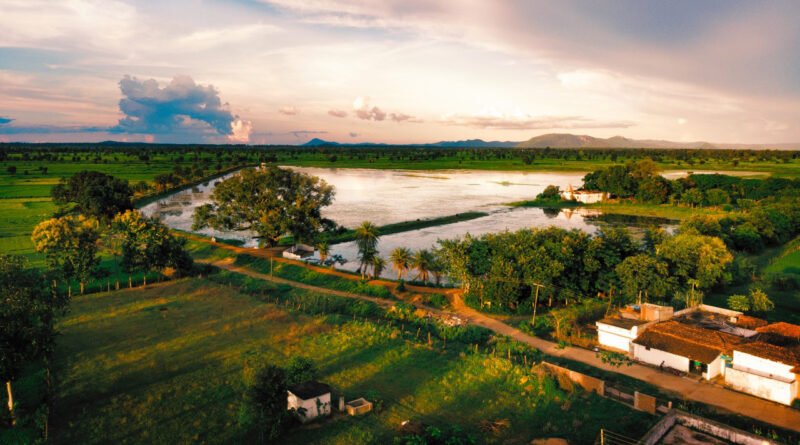Looking East- the right Perspective
Looking East- the right Perspective
Sangita Saikia Pathak
The North Eastern part of India is a landlocked region that has been gifted by Mother Nature in abundance in the form of green vales and blue hills, the rivers along with its tributaries, rich flora and fauna, mineral reserves etc etc.
The abundance of such natural resources has been a major factor in drawing the attention of the invaders towards this part of the region since the days of yore!!! The Ahoms succeeded in invading this region in the year 1228 AD making their way through the dense Patkai jungles and ruled over this region for over 598 years. Even the Moghuls and the Turks were no exception to this though they did not succeed in their attempts.
Moreover the similarities of the climate, geographical terrain and vegetation between the North Eastern region of India and its neighbouring South East Asian countries led to familiarities in their food habits, culture and ways of living. This facilitated some kind of socio-economic- cultural link between these two regions in the ancient times. Trade and commercial relations flourished then through land and water routes between these two regions leading to an overall high per capita income of the North Eastern part of India.
However after the Britishers left India, Assam and the other North Eastern States became a part of the sovereign Indian rule.
This led to the sealing of its borders with its neighbouring countries as a part of its security measures that led to its cut-off from its neighbouring South East Asian countries.
This after-effects of this seclusion however could be felt on its economy over the successive years in the form of loss of its earlier markets in the South East Asian countries. Moreover transport bottleneck became a major issue with the North East being connected to the rest of India through its thin chicken neck. With the closure of its earlier trade routes to the South East Asian countries, the North East India now had to devise different routes through mainland India that became very time – consuming and lethargic. This led to a downfall in the per capita income of this region over several decades.
Ultimately the North East India had to lag behind economically in an enormous way in the absence of due industrialisation and mechanisation despite being a vast reservoir of both natural and human resources. Even the technically highly qualified youths of this part of the country would leave for overseas in search of better employment opportunities. Further a kind of seclusion seeped in this part of the region that led to inner conflicts, extortions and ultimately the monster headed insurgency problem!!!
As a sort of seeking panacea to these problems of North East India, the Department of DONER was first formed in 2001 with the Look East Policy being formulated a decade earlier ago in 1991 to seek the advantages of the physical proximity of the North East India with the fast developing economies of East and South East Asia. Later under the Prime Ministership of Shri Narendra Modiji the Look East Policy was upgraded to Act East Policy as a major component of his Foreign Policy that advocated the revival or strengthening of the long lost ties that the pre-independent North East India shared with its neighbouring South East Asian countries as a part of reviving its lost flourishing economy. And it is in this context that the Act East Policy Affairs (AEPA) Department was formed under the State Government to implement and monitor the Act East Policy of the Central Government in the year 2017.
The Act East Policy Affairs Department has been playing a vital role in improving the socio- economic- cultural ties with the South East Asian Countries, the BBIN countries, the countries of the Middle East(including Israel, UAE and Turkey), Far East (including Japan ,South Korea etc) ( except China) and the BIMSTEC countries by acting as a stakeholder department under 17 (seventeen) other departments viz, Health, Education, Tourism, Transport, Border Areas, PWD (Roads), PWD (Bldg/ NH), Information Technology, Water Resources, Cultural Affairs, Industries & Commerce, Finance, Transformation & Development etc etc.
At the outset, connectivity on the lines of PANCHAPATH (Roadways, Railways, Airways, Waterways and Information – ways ) is laid stress upon to promote multimodal and fast transportation system. Construction of internal highways on international standards, restoration of old railway connectivity networks, dredging of the river Brahmaputra and the Barak along with its tributaries, development of inland waterways and ports on the major rivers of Assam , development of direct air connectivity of Guwahati with the major cities of ASEAN and BBN bloc countries, improving of net connectivity through Information and Communication Technology are some of the tasks that need to be taken up immediately.
Along with it the Act East Policy Affairs Department is instrumental in promoting and funding research work, seminars, stakeholder meets, trade fairs, food fesrivals, exposure visits, community tourism, sports events, cultural exchange programmes, student exchange programmes etc from its budgetary provisions. Moreover facilitation of Act East Cities at Silchar, Digboi, Numaligarh, Tezpur- Silghat, Dhubri and Bongaigaon and a twin city of Guwahati at Chandrapur/ Sonapur have also been undertaken.
The opening of Consulates/ Assistant High Commissioners’ Offices of ASEAN and BBIN countries along with facities of Visa-Free Travel/ Visa on Arrival for bona- fide people ( traders, officials and tourists) are being taken up on a serious note. Already Bhutan has set up its Consulate General Office in Guwahati in 2018. The setting up of Assistant High Commissioner’s office of Bangladesh in Guwahati and the bus tour to Bangladesh are some significant events in this regard.
To facilitate the research oriented works of the Act East Policy, the Act East Policy Affairs Department has devised a scheme named as Kumar Bhaskar Varma after the name of the ancient Assamese king who was far ahead of his times in promoting relations of Assam with China and South East Asia. Besides research oriented work and promotion of socio- economic- cultural ties with the neighbouring countries, formulation of the Act East Policy would also bring in transparency along the border areas of the country thereby keeping a check on nefarious and illegal activities like the drug menace, human trafickking etc etc besides giving a boost to the Tourism sector of North East India.
To conclude, through the actualisation of the Act East Policy, the Government of India aims at transforming North East India into an industrial/ economic hub by reviving its old long lost ties with its neighbouring countries. The landlockedness of North East India with its neighbouring countries is of great strategic importance in the context of the evolution of its economy , which if exploited fully could perhaps succeed in bringing about a complete new era in its economy besides ushering in peace, progress and prosperity to this beautiful paradise on earth. Let us all hope for the best and repose our faith in the true formulation of this Act East Policy in the days ahead of us!!!!

Sangita Saikia Pathak has been writing poems, short stories and articles since her college days. Soulful Musings is her first poetry collection. She works in the Govt of Assam.




